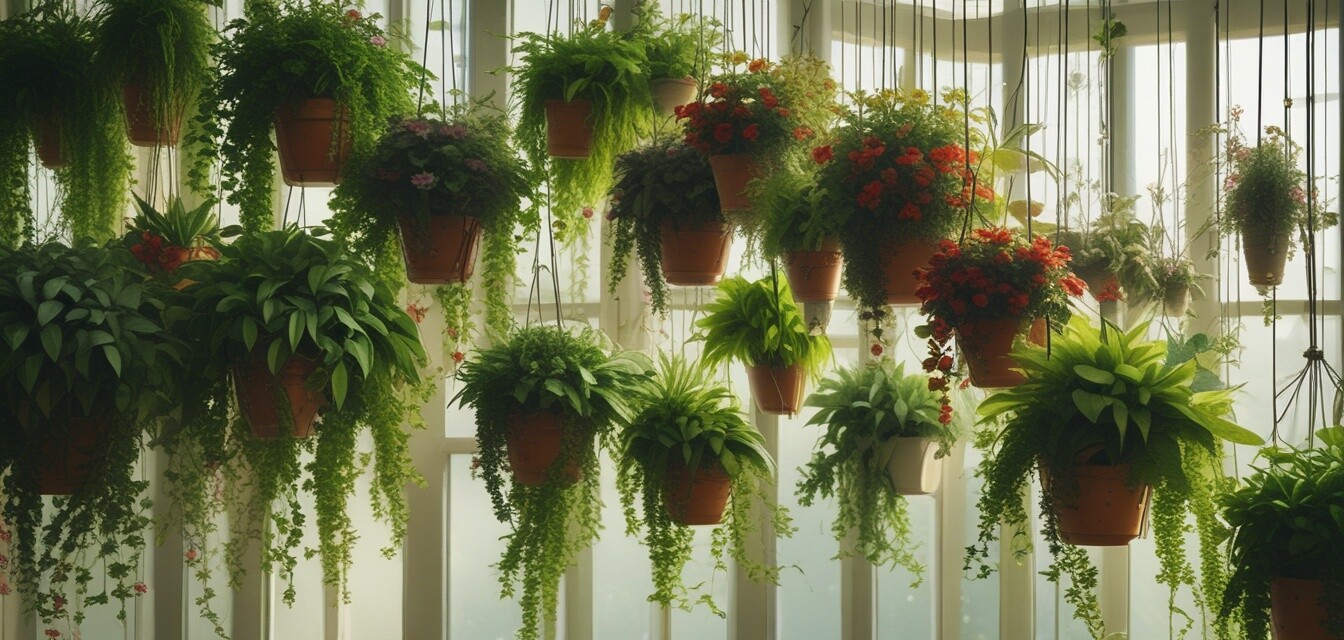
Best Hanging Plants for Vertical Gardening
Key Takeaways
- Maximize space with beautiful hanging plants.
- Select plants that thrive in vertical garden setups.
- Consider factors like light, watering, and maintenance when choosing plants.
- Explore a variety of plants, from succulents to flowering options.
- Find inspiration to enhance your living or work environment.
Vertical gardening is an excellent solution for those with limited space, allowing you to bring greenery into your home while maximizing your area. Among the various options available, hanging plants stand out not only for their aesthetic appeal but also for their ability to thrive in vertical setups. In this article, we’ll explore some of the best hanging plants suitable for vertical gardening and provide tips on how to care for them.
Why choose hanging plants for vertical gardening?
Hanging plants provide an attractive way to incorporate greenery into smaller spaces, such as apartments, balconies, or offices. They can create a lush, waterfall effect and are often easier to maintain than traditional potted plants. Here are a few reasons to consider hanging plants:
- Space-saving: They utilize vertical space effectively.
- Aesthetic appeal: Create beautiful displays with cascading foliage.
- Easy maintenance: Generally low-maintenance options available.
Top hanging plants for vertical gardening
To help you choose the perfect hanging plants, we've compiled a list of some exceptional options that thrive in vertical gardens:
| Plant Name | Light Requirements | Watering Needs | Care Level |
|---|---|---|---|
| Spider Plant | Bright, indirect sunlight | Water when top inch of soil is dry | Easy |
| Boston Fern | Indirect sunlight | Keep soil moist | Moderate |
| Pothos | Low to bright indirect light | Allow soil to dry out between waterings | Easy |
| String of Pearls | Bright, indirect sunlight | Water when soil completely dries out | Easy |
| Hoya | Bright, indirect to filtered sunlight | Let top inch dry out | Easy |
Care Tips for Hanging Plants
Caring for hanging plants is essential to ensure they thrive in vertical gardens. Below are some general care tips to help maintain their health:
- Watering: Always check the moisture level before watering. Overwatering is a common issue.
- Light: Ensure your plants receive the appropriate light conditions. Adjust their location as needed.
- Fertilizing: Use a balanced fertilizer during the growing season to promote healthy growth.
- Pruning: Regularly prune dead leaves and stems to encourage new growth and keep plants healthy.
Additional Resources
If you're interested in expanding your knowledge about other indoor plants and how to care for them, check out our comprehensive guides on the following:
- Air-purifying plants – Enhance your air quality while enjoying greenery.
- Low-maintenance houseplants – Perfect for busy lifestyles.
- Houseplant care tips – Essential tips to keep your plants thriving.
- Pet-friendly plants – Safe options for homes with pets.
Tips for Successful Vertical Gardening
- Select plants that are suitable for the available light in your space.
- Consider using a watering system to make care easier.
- Use lightweight pots to make hanging easier.
- Rotate your plants occasionally for even growth.
Conclusion
Hanging plants not only enhance the beauty of your vertical garden but also optimize limited space effectively. By considering the right plant for your environment and following proper care instructions, you can create a thriving vertical garden. Remember to explore different types of hanging plants, so you can find the perfect greenery to complement your living space!
Pros
- Great for small spaces.
- Adds decorative appeal.
- Variety of plants to choose from.
Cons
- Some may require more care than others.
- High humidity plants may not thrive in dry conditions.

